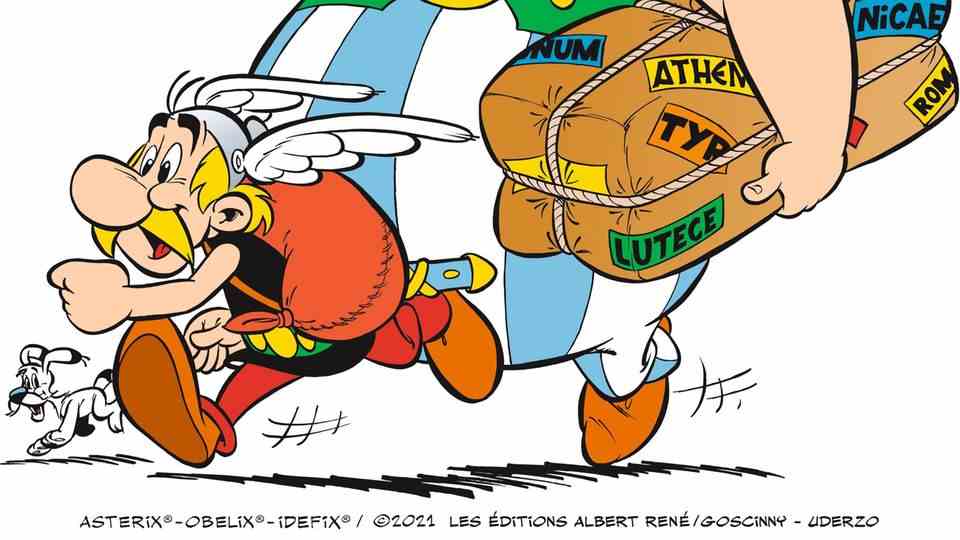“Zack” – the name is enough to set off the mental cinema of male baby boomers. 50 years ago today, the legendary comic magazine was published for the first time. A declaration of love with a dash of melancholy.
Even today, despite Corona and the Ukraine war, there are moments when baby boomers feel nostalgically warm in their hearts. “A men’s magazine for children: The cult comic ‘Zack’ turns 50,” the DPA news agency headlined a correspondent’s report. And I bet: In every editorial office that this message has reached, there are a few media people, usually born around 1964/65, from whom a soft sigh escapes at this moment: “Oh man! Yes! ‘Zack’!”
Nowadays, with the internet, Instagram and Netflix, that’s incomprehensible. But back then, 50 years ago, the comic magazine “Zack”, which saw the light of day on April 13, 1972, was something like the elixir of life for a lot of boys (and they were really mostly just boys!) in a pretty desolate West German 1970s reality. Miniskirts, hash cookies and free love may have shaped the decade in Hamburg or Munich. In Gütersloh, Süderbrarup or Wermelskirchen, the years were actually pretty dull for adolescents.
Only three TV programs. The phone had a rotary dial. The highlights of the day were the afternoon kick in the schoolyard or when the pool was open for ten. But then Thursday came. The day the new “Zack” edition hit the kiosk. With the immediate promise of salvation: “Fun every week. Excitement. Adventure.” An A4 sized booklet about dudes traveling through time, cavalry battling angry Sioux, and jet pilots preventing nuclear bombs from falling into the hands of super villains.
“Zack” filled the gap for everyone who was too old for “Fix und Foxi” and too young for “Bravo”.
“Zack” was new. “Zack” was different. Above all, “Zack” filled a gap for everyone who was too old for “Micky Maus” and “Fix und Foxi” but not yet old enough for “Bravo”. And it is certainly no coincidence that all of us who were disciples from the very beginning still fluently roll off the names of the heroes: the racing driver “Michel Vaillant”, the US cavalryman “Lieutenant Blueberry”, the jet Pilots “Mick Tangy” or “Dan Cooper”. All of them heroes who have long enjoyed cult status in the comic-savvy neighboring countries of France and Belgium.
“Zack” offered outstanding European comics the first big stage – drawn with images like from a feature film and mostly with captivating dramaturgy. Many of these series would be called graphic novels today. The trick: at the climax, the story was postponed to the following week. Sequel follows. There was space for a good half dozen comic formats on 50 pages.
The secret was the mixture and the completely different drawing style. The tough heroic stories and dark science fiction epics (“Valerian” or “Luc Orient” for example) were mixed with lighter, humorous material such as “Lucky Luke”, “Umpah-Pah” or “Cubitus”. Added to this was something like an educated middle-class coat of paint. In the middle of the magazine, in the “Zack 2000” section, there were four extra pages dealing with real-life adventures (diving on the Great Barrier Reef, drag racing).
Attention was also paid to the reader-magazine relationship. On the last page, letters to the editor were answered that had to do with topics from the stories in the broadest sense (“Which Indian tribe introduced the scalping? Who was the inventor of the cannon?). In a reader hit parade you could vote for your favorites and win something (A 35mm camera, for example, as actually happened to the writer of these lines).
450,000 “Zack” copies week after week
At its best, “Zack” was a major player at the kiosk, around 450,000 issues were sold week after week. But as is so often the case with the heroes of the past: at some point they get tired. In the case of “Zack” the reservoir of good stories was exhausted. The concept had become obsolete. In 1980 Koralle Verlag discontinued the magazine after 291 issues (the 291 issues in eight years can be explained by the fact that the frequency of publication was repeatedly switched between weekly and fortnightly).
That really could have been the end of the story. But it turned out that the drug was still having an effect on the boys who were hooked at the time. At trade fairs, on E-Bay, in comic salons, there were still a few strays to talk shop about the good “Zack” years. Individual editions fetched considerable sums for their owners at auctions or on exchanges. And there are enthusiasts whose pack of old “Zack” magazines has survived every move because they didn’t have the heart to banish the little boy magic from life for good.

This is how the “Zack” resurrection actually came about in 1999, when the mosaic publishing house in Berlin revived the magazine and undauntedly brought it onto the market by autumn 2020. In the meantime, the Blattgold editorial office in Bad Dürkheim has taken over the magazine, which is now celebrating its anniversary with a 100-page edition and a limited edition box. “The circulation is around 8000 copies. “It is primarily read by the now older boys who discovered their love for the magazine between 1972 and 1980. But there are also younger ones,” says publisher Georg FW Tempel.
The first “Zack” issue was number 17
Tempel relies on the mixture of a pinch of nostalgia in the form of well-known comic series and new content, which, however, would have to follow certain visual and content-related rules. He could probably just print the originals from 50 years ago week after week. There would certainly be enough fans who would like to dive back into the past. Incidentally, it didn’t start with issue 1, as one might expect, but with issue 17. “Why?” was probably the question most frequently asked by readers. Answer: The first (or the first) “Zack” – opinions differ – appeared in the 17th calendar week.
Regardless of the numbering, publisher Tempel believes in a future for “Zack”: “I’m in good spirits that we’ll be celebrating our next milestone birthday in ten years.”
Thanks for remembering Christof Bock and Wolfgang Jung from the DPA



